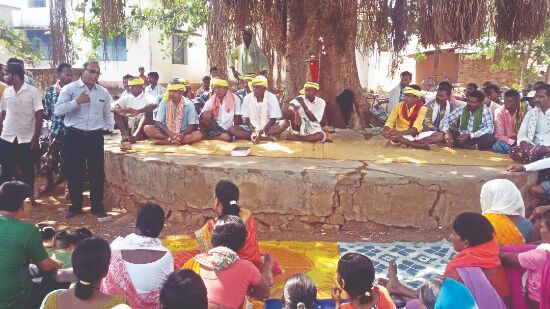Whip in their hand
Both Central and state governments need to strengthen the third tier in rural India to ensure development and social justice at the grassroots

Recently, I was asked to interact with the newly recruited grade one officers of the Rural Development Department, Government of Tamil Nadu in a training programme. They are all bright and passionate young minds, both men and women, looking for ideas to bring transformational change at the grassroots. During my lecture, one of the trainees asked a question about the current status of the devolution of powers in India and its implication in the life and livelihood of the rural masses. While responding, I asked them to read a report published as a book by Cambridge University Press entitled "Decentralization and Empowerment for Rural Development". James Manor, an internationally acclaimed scholar on decentralization wrote in his review article that it is a well-researched document by a team of experts at the National Council of Applied Economic Research (NCAER) New Delhi, based on a unique household data set. This report is the outcome of six years of research, supported by the International Development Research Centre, Canada.
No other study has been carried out at the scale, based on the household data set, to match the extensive nature of the NCAER study. Hence, it is considered a unique and significant study from a policy perspective, with 9,000 respondents covering seventeen states in India between 1999 and 2007. The study brought to light the following transformational changes in the rural areas: i) population grew slowly; ii) household and farm sizes have gone down; iii) per capita income has increased; iv) income from non-farm sector employment and self-employment has increased; v) villages have got access to more infrastructure facilities; vi) the government launched more development schemes and provided a huge amount of subsidies; vii) wages of unskilled labourers have been increased viii) women wages have been increased; ix) prices of agricultural land have skyrocketed; x) Gram Sabha met more frequently; xi) participation of members increased; xii) reservation of seats to women has yielded good and positive results; xii) household economic welfare is improved; xiii) women pradhan observed rules more meticulously than men pradhan xiv) standing committees worked better; xv) panchayats' vulnerabilities were reduced; xvi) expenditure on health, education, water was limited yet its impact was positive, both in quantity and quality; xvii) panchayats reduced private expenditure on education and healthcare; xviii) better welfare outcome measured through higher literacy of the children, higher earnings caused by better health and saving of time to fetch water; xix) women and Dalit raise questions in the panchayat councils and Gram Sabhas; xx) per capita bribe is more than per capita income to avail the legitimate services and entitlements. From the above results, the authors of the book made a series of recommendations.
Despite poor financial resources, limited devolution of powers, and poor capacity of leaders, the local governments have been more effective in their decision-making. Local bodies need more real powers and improved accountability. The revenue base has to be broadened as per the recommendations of the Second Administrative Reform Commission. Incentivization of panchayats will improve tax collection. For effective management of panchayats and to increase the quality and quantity of services, they have to be rationalized from the perspective of their size. It is essential that the line departments have to be oriented to work on the demands of the Gram Sabha as recommended by the National Commission to Review the Working of the Constitution of India. Multi-level planning from gram panchayats to District panchayats should be made mandatory and be done in the backdrop of sustainable development goals. Two-term reservation of seats for women and Dalits in panchayats, as recommended by the Punch Commission, should be ensured. The training institutions have to be equipped with the induction of professional faculty for the capacity development of panchayat leaders. Their leadership capacity has to be enhanced by inducing the transformational leadership module in the training framework. Further, to get the best results from the panchayats in the training programme, local leaders have to be taught meticulously on how to achieve local economic development and social justice through building quality assets and democratizing communities through institutions like Gram Sabha, panchayat council, and standing committees. Scientific management of resources and effective management of financial resources have to be taught to the panchayat leaders. Rationalizing the panchayats through management perspective is the need of the hour. The leaders have to be taught how to improve the deliberative capacity of the people and how to mobilize people, more specifically the marginalized, to participate in the governance and development process at the grassroots. From the above findings and recommendations of the significant study, both the Centre and state governments have to take steps to equip the local bodies to achieve economic development and social justice through the participation of people in the preparation of the gram panchayat development plan. This is the need of the hour.
The author is a former Professor and Rajiv Gandhi Chair for Panchayati Raj Studies, Gandhigram Rural Institute. Views expressed are personal



